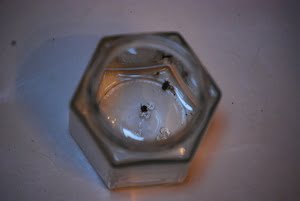It is that time of year again and it seems this year there are more ticks than there were last year. The ticks are out in full swing and ready to attach themselves to passerby’s from any shrub or tree limb.
There are many types of ticks, the most common being the American dog tick. This tick does not carry Lyme disease, but does however carry Rocky Mountain spotted fever. The tick that carries Lyme disease is the black-legged tick, or more commonly known as the deer tick. The disease is spread mostly when the tick is in the nymph stage of its life cycle, mainly due to its small size at this stage. A larger tick is noticed quickly and you can get rid of it quickly.
Ticks attach themselves to humans and animals with their chelicerae or cutting mandibles and inserts the feeding tube or hypostome into the skin. The feeding tube is covered with curved teeth that once they are in, it is difficult to pull out, such as a barb on a fish hook would be.
Ticks do not jump like flees do, nor do they fly like mosquitoes. The only way that they can get onto you or your pet is by catching a ride on you or your clothing as you walk through tall grass or brush, or drop on you from a tree branch or other high place. Some species actually will stalk the person or animal, and will then find their way to your bare skin under clothing or inside your pets fur.
Lyme disease if feared by many people. This disease is caused by ticks that carry the disease, and not all deer ticks have the disease. Some of the symptoms of the disease include a rash similar to a bulls-eye shaped mark on the skin, fatigue, irritability, headaches, and joint pains, and are often misdiagnosed due to similarities to other illnesses. The onset of the symptoms can be as little as a few days up to years. Doctors can do a blood test to see if you have the disease, but unless there is justified cause, this is usually not done due to the testing process. Early stages of the disease can be false negatives, but can be diagnosed in its later stages. A long treatment of antibiotics is used to treat the disease and is extremely expensive, and most insurances do not like the cost of this and in some cases will not cover the treatments.
A tick will feed until it engorges itself on an animal or human until it eventually falls off, often taking a few days to do this. They often look like a small dried grey mushroom top at this stage and have difficulty moving around. They will live off the blood they gather for a very long time. Ticks feed only three times in their lives, once after it is in the larvae stage during spring, then again when it is in the nymph stage the following spring, then again in the winter after it mates and before laying eggs. After laying eggs, the tick then dies, living a two year life span. Feeding sessions last from only two to five days for each feeding.
To remove a tick, most people resort to grabbing tweezers and pulling the tick out. Often times this leaves the head of the tick inside its victim, and if the victim is willing, you can dig this out eventually. This is very painful and uncomfortable and most animals will not lay still while you do this, let alone a person. Others turn to using something hot such as a burned out match or stick, of course this may kill the tick, but the head probably still remains in the victim. The other age old method is the use of rubbing alcohol or drinking alcohol. This does work and takes some time, and you need to keep applying the alcohol to get the tick to back out. A more stubborn tick will still need encouraging to come out. Others resort to a doctor visit or hospital visit to have it removed and can cost a great deal.
To safely remove a tick and not cause discomfort to the victim, get some kind of thick cream, such as toothpaste, ointment, shortening, hair gel, or for quicker results, the gel based sun burn ointment with pain relief. Put a heavy coating over the entire tick and surrounding area. The tick will back out usually quite quickly and can be often just wiped away with a paper towel or tissue. Once the tick starts to back out, you can usually pull it free from the victim. This method is great to use for children and pets. The children will not feel any fear from the cream or ointment, and in most cases, you don’t have to try to dig out any remaining parts.
Once the tick is out, you can dispose of it by flushing the paper towel or tissue down the toilet, burning it in a safe place, or put in a zipper plastic bag and toss in the trash. If you feel sick or if you see a lot of redness around the area resembling a rash, you may want to contact a doctor and see if testing for Lyme disease is needed.
Remember to check yourselves and your loved ones whenever you are out in areas where you can pick up ticks, use bug repellents if you can, and have a safe and fun summer.
Cited: Although some of the information is common knowledge or home remedies handed down through family members, information on Lyme disease and ticks can be found in part at these sites and others:
http://en.wikipedia.org/wiki/Lyme_Disease
http://en.wikipedia.org/wiki/Tick




